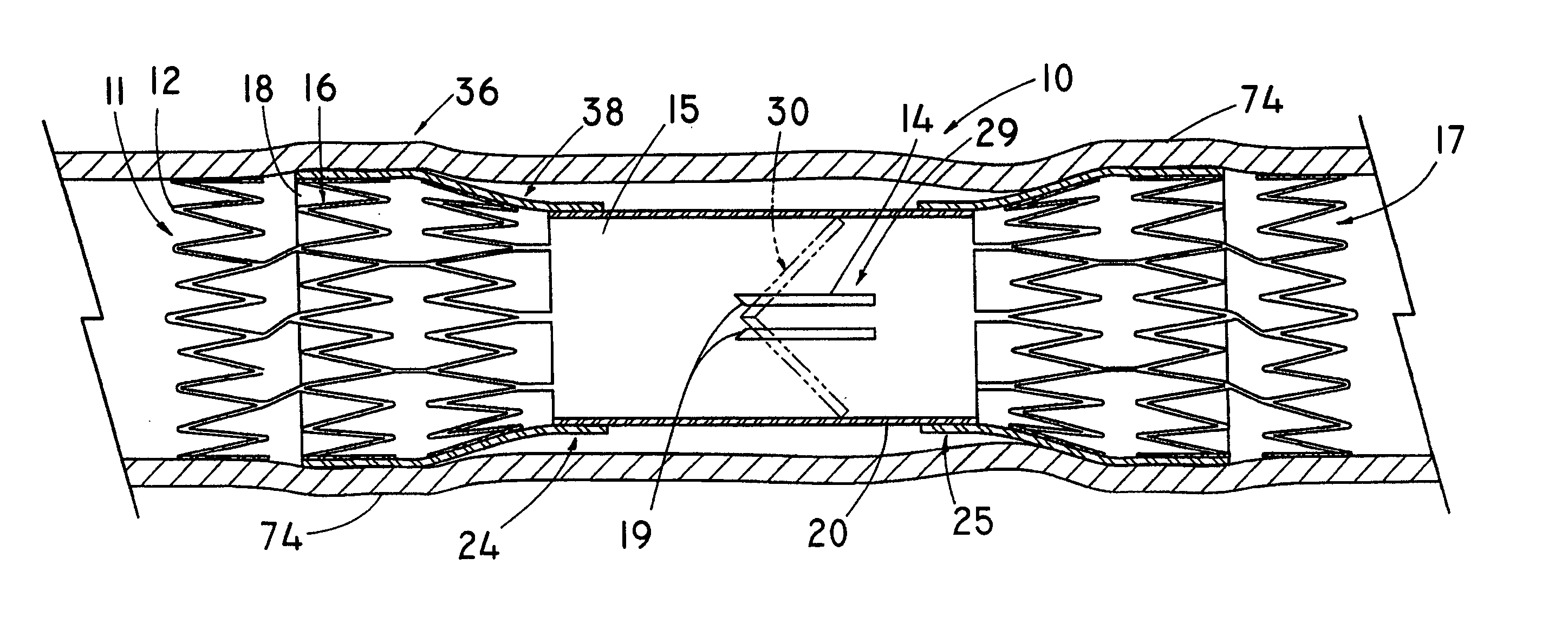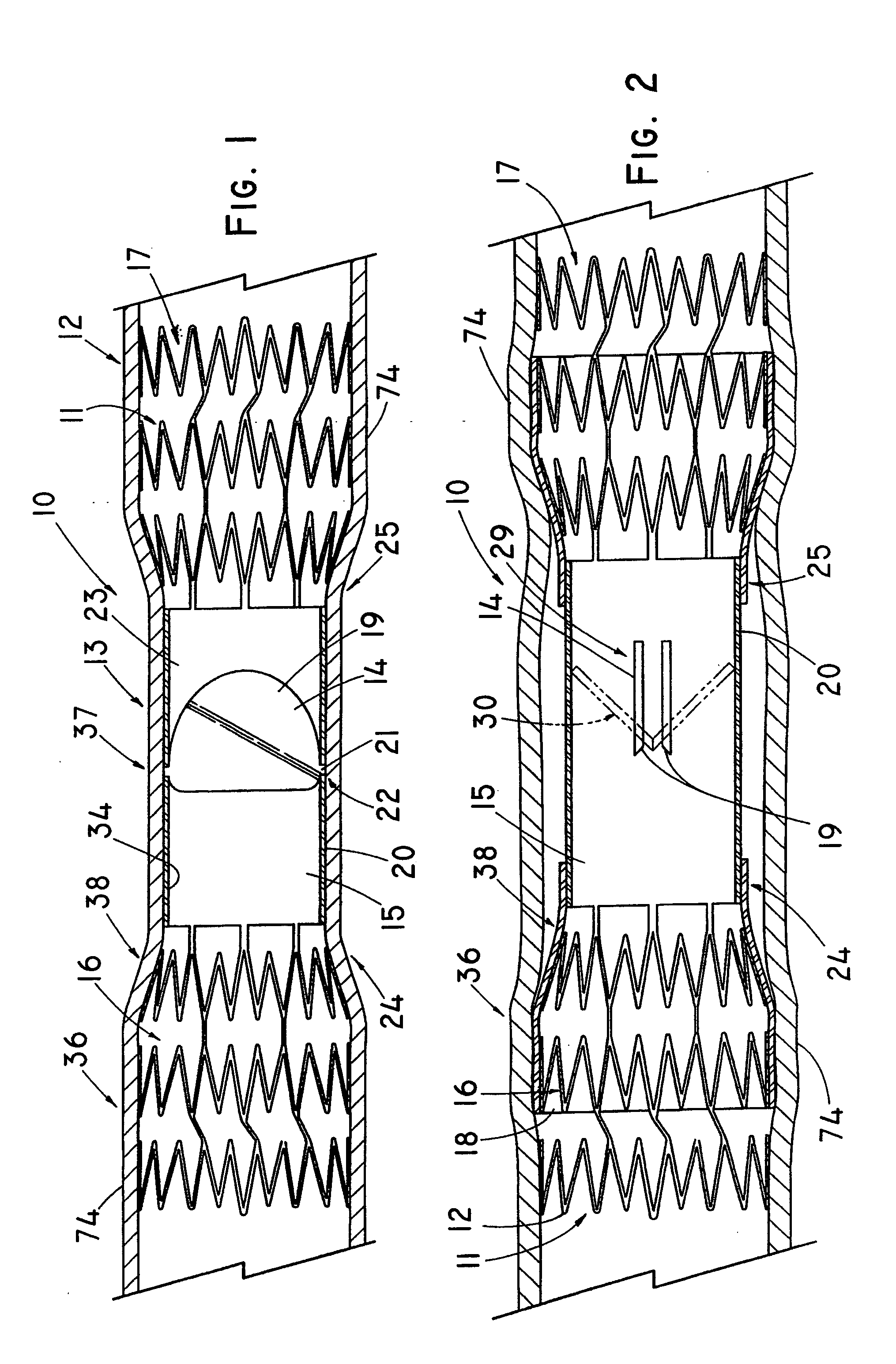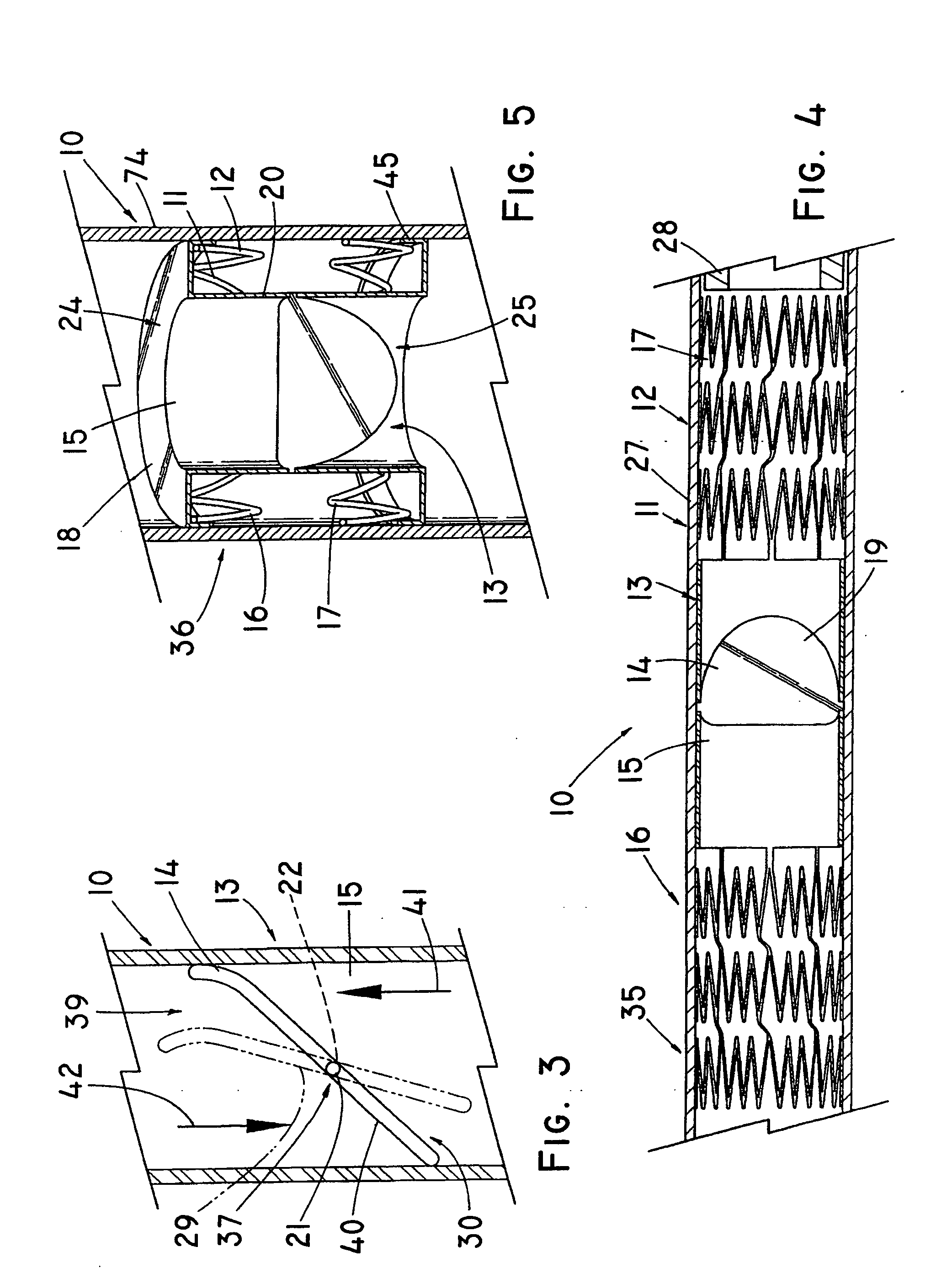Percutaneously placed prosthesis with thromboresistant valve portion
a technology of thrombosis resistance and prosthesis, which is applied in the field of prosthesis with thrombosis resistance valve portion, can solve the problems of inability to be easily compressed or collapsed for delivery, and achieve the effect of preventing or limiting the reflux of blood
- Summary
- Abstract
- Description
- Claims
- Application Information
AI Technical Summary
Benefits of technology
Problems solved by technology
Method used
Image
Examples
Embodiment Construction
[0030]FIGS. 1-23 depicted a series of embodiments of the present invention of an implantable prosthesis 10, such as an artificial venous or heart valve that includes a support structure 11 comprising one or more anchoring portions 12 configured for engaging the vascular wall, and a valve portion 13 comprising a valve-closing mechanism 14, such as one or more sealing elements, and a valve support housing 15 that comprises a substantially rigid material such that the valve portion 13 or valve support housing 15 has limited collapsibility and thus, relies on the anchoring portion(s) 12 to expand and fully engage the vessel wall to anchor the prosthesis 10 thereagainst. Barbs (not shown) may further serve to help anchor the prosthesis at the implantation site. The valve portion 13 includes either an outer diameter sufficiently small for delivery through a delivery member 27, whereby the anchoring portion provide the necessary radial expansion to engage the vessel; or the valve portion 1...
PUM
 Login to View More
Login to View More Abstract
Description
Claims
Application Information
 Login to View More
Login to View More - R&D
- Intellectual Property
- Life Sciences
- Materials
- Tech Scout
- Unparalleled Data Quality
- Higher Quality Content
- 60% Fewer Hallucinations
Browse by: Latest US Patents, China's latest patents, Technical Efficacy Thesaurus, Application Domain, Technology Topic, Popular Technical Reports.
© 2025 PatSnap. All rights reserved.Legal|Privacy policy|Modern Slavery Act Transparency Statement|Sitemap|About US| Contact US: help@patsnap.com



